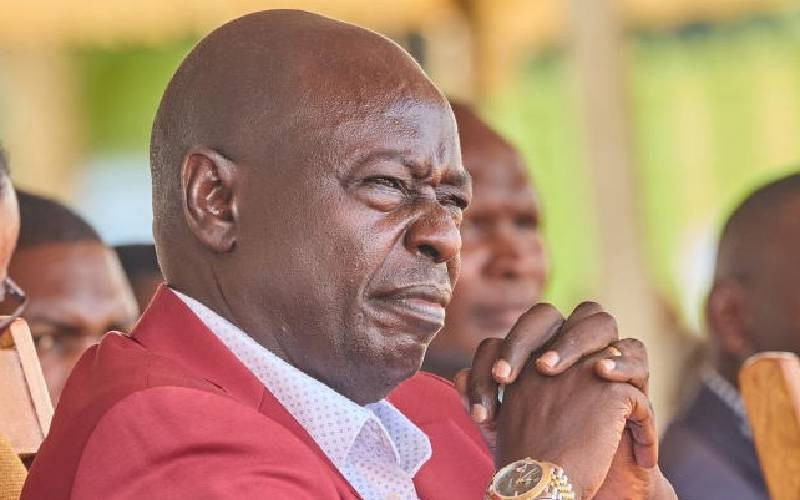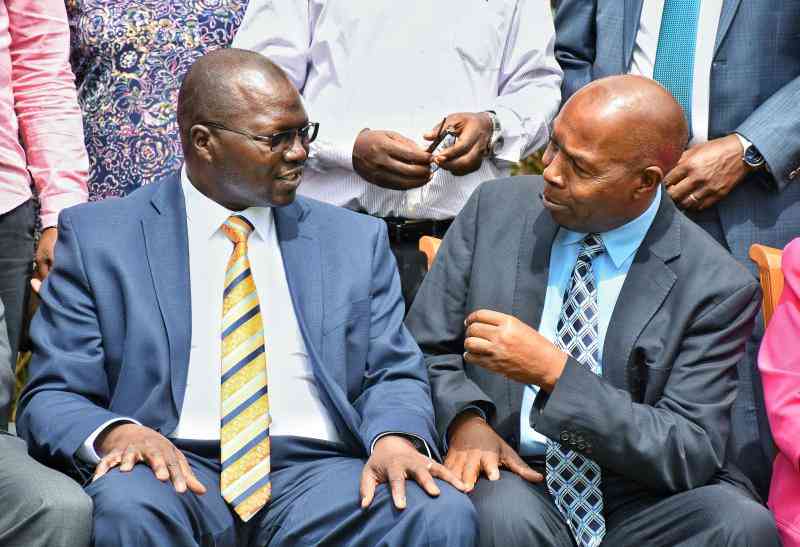Regulation on fund management should be challenged
Two developments in the last week relating to the Equalisation Fund have reinforced concerns that the intentions of the Constitution on this Fund are quietly being subverted. First was the publication by the National Treasury of the regulations for the management of the Fund.
The Equalisation Fund, which translates to about Sh3.5 billion a year is provided for under Article 204 of the Constitution.
This Article was included in the Constitution to facilitate affirmative action development programmes for those areas that had remained marginalised for many years to bring them to the level of other parts of the country.
The Fund was to be utilised for investments in health, water electricity and roads.
It was to be managed by the National government through its own direct undertakings or through conditional grants to county governments. All along the assumption has been that unless the interventions that the National government wished to undertake in furtherance of this Article related to functions allocated to the National government by the Constitution, or were of such magnitude as to require them to be undertaken as national programmes, such interventions would be carried out by counties through a conditional grant arrangement.
Since the sectors that the Constitution expects the Fund to intervene on are devolved it would only be prudent that such works be carried out through a county government framework with the safeguards that the conditional grant would require. This would also ensure that such interventions are duly incorporated into the county planning process to avoid incoherent and wasteful development spending.
The regulations published by the Treasury are problematic in that they completely exclude counties from even being consulted prior to the National government undertaking its interventions.
The regulations do not also provide a process of incorporating the projects proposed to be carried out in the county planning process. This defeats core components of our public finance framework, including the need for consultations in development planning.
One hopes that these regulations are works in progress and will continue to be reviewed so as to align them with Constitutional principles.
The more worrying development was the quiet passage by the National Assembly of the Constitutional Amendment Bill transferring the Equalisation Fund from management by the National government generally and through counties to constituencies.
The amendment should not have been a surprise to anyone who has followed the legislative process in Kenya where the various legislative arms have consistently made laws that accord them advantage. Whether it is the CDF, or the County Development Boards sponsored by the Senate, or the Ward Development Funds for MCAs, self-interest legislating is the new trend in Kenya’s legislatures.
As the Bill heads to the Senate, which fortunately does not have a self interest in the matter, certain issues must be taken into consideration when determining the fate of the Bill.
Firstly, in our constitutional framework, constituencies are not recognised as developmental or planning units outside of the county framework.
This aspect was emphasised by the courts in the CDF case and any attempt to replicate the same for the Equalisation Fund will face court challenge. Secondly the very essence of the Fund may be prejudiced if the Fund is cut into small micro-projects at constituency level.
Stay informed. Subscribe to our newsletter
The idea behind the Fund was not just to allocate more revenue to marginalised counties; this already occurs through the division of revenue process; but to enable more large and medium scale interventions that would open up areas previously closed up through marginalisation.
Indeed the language of the Constitution is marginalised areas, not counties, out of recognition that marginalised areas do not fall within neat boundaries.
The flexibility in the application of the Fund would for instance allow large infrastructure projects, impacting regions as opposed to single counties or constituencies.
The proposed amendment therefore claws back on the intent of the Fund and must be rejected.
Finally and more critically the proposed amendment deals with the funding structures of devolution.
Under Article 255 of the Constitution, any changes to the structures of the devolved system of government will require a referendum.
Is this amendment so critical that the country should spend billions of scarce monies to facilitate it? Absolutely not.
 The Standard Group Plc is a
multi-media organization with investments in media platforms spanning newspaper
print operations, television, radio broadcasting, digital and online services. The
Standard Group is recognized as a leading multi-media house in Kenya with a key
influence in matters of national and international interest.
The Standard Group Plc is a
multi-media organization with investments in media platforms spanning newspaper
print operations, television, radio broadcasting, digital and online services. The
Standard Group is recognized as a leading multi-media house in Kenya with a key
influence in matters of national and international interest.
 The Standard Group Plc is a
multi-media organization with investments in media platforms spanning newspaper
print operations, television, radio broadcasting, digital and online services. The
Standard Group is recognized as a leading multi-media house in Kenya with a key
influence in matters of national and international interest.
The Standard Group Plc is a
multi-media organization with investments in media platforms spanning newspaper
print operations, television, radio broadcasting, digital and online services. The
Standard Group is recognized as a leading multi-media house in Kenya with a key
influence in matters of national and international interest.









